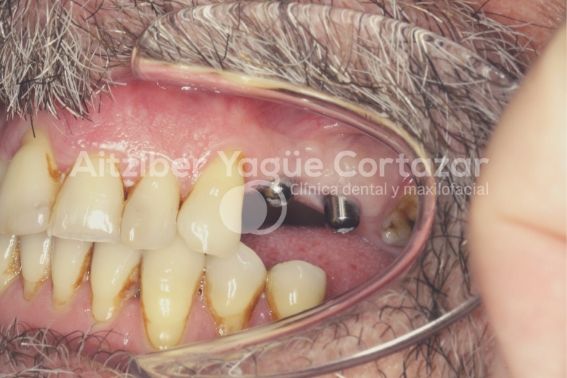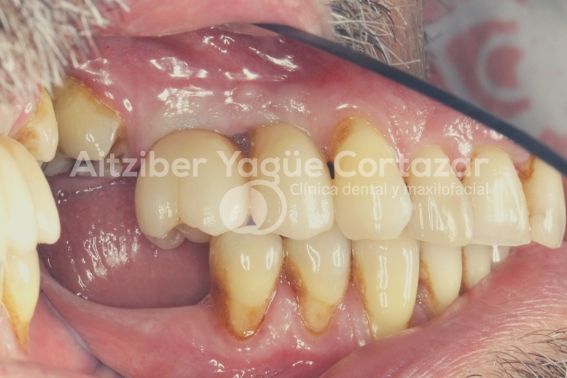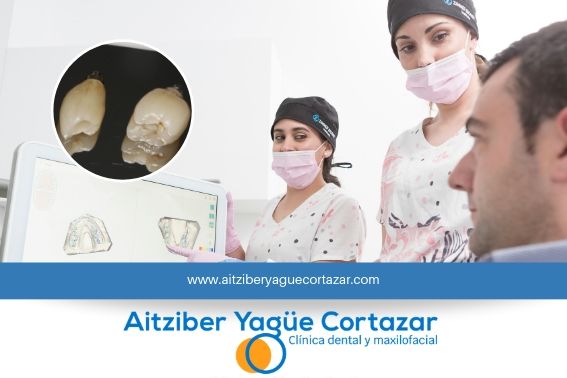Monolithic zirconium oxide crowns: Complete esthetic adaptation to the patient’s mouth
The use of monolithic zirconia crowns has been carried out in recent years in cases where the implantation is performed in posterior areas and there was not enough space for a restoration of crowns with ceramic coating or in bruxist patients, where the Feldspathic veneering ceramic is the weak point that can fracture.
Until now, when the interocclusal space was insufficient, and a 1 mm thick space was not guaranteed for the porcelain covering the metal coping, it was necessary to make the occlusal contact point with the metal antagonist or the entire metal occlusal surface already otherwise the porcelain will eventually come off. This brought the consequent aesthetic problems that right now they no longer have.
THE INCREDIBLE AESTHETIC IMPROVEMENT AND PATIENT COMPATIBILITY
Today, thanks to this type of monolithic crowns made with zirconium oxide, we can put an end to this type of problem. A clear proof is this restoration, a clinical case in which thanks to a previous digital design with 3D itero and Exocaden software, we have managed to completely adapt the enamel tone. Even with the patient’s smoking status. The result is more than correct. Accuracy, precision and aesthetics.
It is so accurate that if you look at the last photograph, you would not know what the implanted piece is. We challenge you!
1. Katana monolithic zirconia crowns adapted to the shade of the patient’s teeth


3. Denture of the patient with the crowns already inserted. Find the 7 differences [Just kidding. But do you see the implanted piece? Awesome!  ]
]





